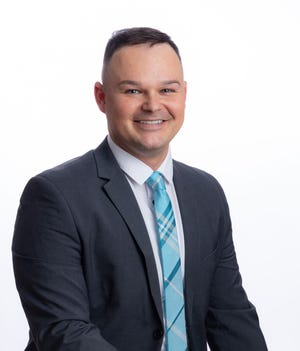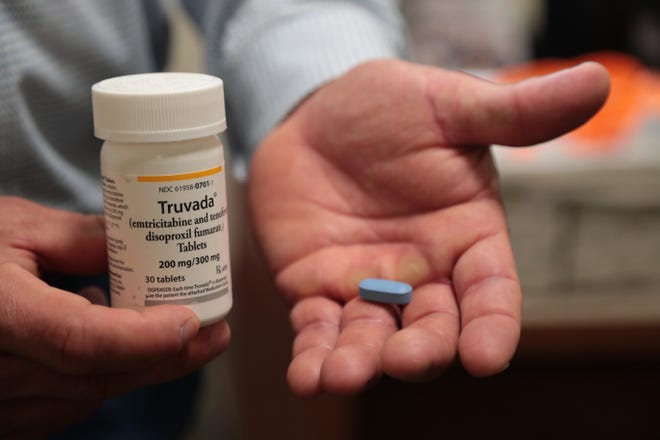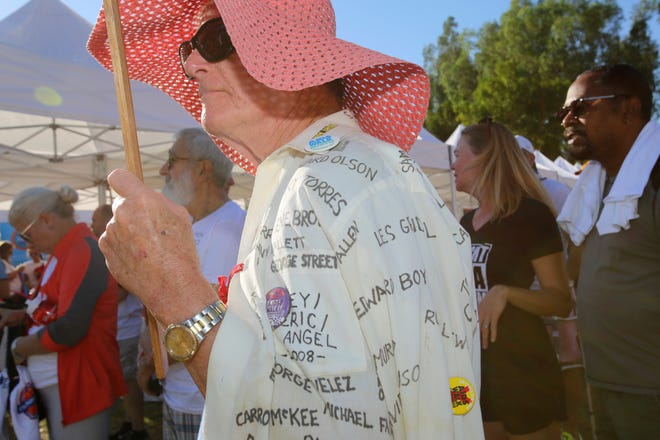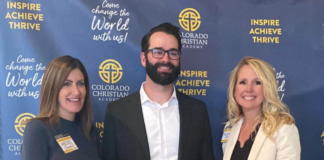As a professional dancer for the Metropolitan Opera in New York City at the height of the HIV/AIDS epidemic in the mid-1980s, it was a common sight for Joseph Carman to see a sign posted at work, almost daily, announcing a colleague’s death.
At the same time, the 35-year-old dancer was hiding his own HIV diagnosis. HIV, which stands for human immunodeficiency virus, is a virus that attacks cells that help the body fight infection. If left untreated, it can lead to AIDS, or acquired immunodeficiency syndrome.
The Centers for Disease Control and Prevention once identified the ”Four H” risk groups for AIDS as homosexuals, heroin users, hemophiliacs and Haitians.
“It became just so overwhelming,” said the Palm Springs resident, 69 today. “There weren’t many spaces for you to talk about it safely, and in those days, you could be fired for that, and you could be fired for being gay.”
During that same time period, David Parry, today a 59-year-old Rancho Mirage resident who is HIV-negative, was a college student and saw how much of a stigma HIV/AIDS carried. At one point, the virus was referred to as “gay-related immunodeficiency,” and he frequently heard people call it a “gay cancer.” That impacted him greatly as a gay man, to the point where he did not feel safe to come out and live his life as freely as he would have wanted.
Neither imagined living through one pandemic and losing so many loved ones, let alone another that has taken hold of the entire world in the past 18 months. But the COVID-19 pandemic has reminded many of what they survived once, and that they were ready to fight again.
“I think of my friends who are in the 50 to 60 year range, we’ve been there, so as soon as there were options, like wear a mask, stay home, don’t circulate, a vaccine, we were all first in line and very, very disciplined,” Parry said.
Much has changed in the 40 years since the CDC reported on the first five cases of what would be known as AIDS. Today, it is widely understood that the virus can be spread to all individuals, not just certain groups, though some are still at higher risk of infection. There are also several medications available to prevent getting HIV, or, if they have the virus, to help live as healthy of a life as possible. Approximately 79.3 million people around the world have been infected by HIV since the start of the epidemic and 36.3 million people have died.
As the Desert AIDS Walk gets set to return in-person later this month, community members reflect on the last four decades of the virus and the parallels between the HIV/AIDS and COVID-19 pandemics.
Read more: DAP Health opens registration for Desert AIDS Walk 2021
More: Memorial for Timothy Brown, first person cured of HIV, planned in Palm Springs
‘Feelings of déjà vu’
Doctors and scientists better understand how both viruses affect the human body and spread from person to person today, but initially there were a lot of unknowns.
With HIV/AIDS, rare lung infections and an aggressive cancer called Kaposi’s sarcoma first began to show among gay men and people who injected drugs in 1981, and by the end of the year, there were 270 reported cases of immune deficiency in gay men. The following year, more cases appeared among gay men in Southern California, which suggested the illness was sexual, leading to the name “gay-related immune deficiency.” Cases also surfaced among hemophiliacs and Haitians.
As more cases popped up around the world, people learned that the virus did not discriminate. Men carrying the virus could pass it on to women partners, and mother-to-child transmission could occur during pregnancy, birth or breastfeeding. When basketball player Earvin (Magic) Johnson announced he had HIV, it helped begin to dispel the stereotype that only gay men could contract the disease.
Think back to March 2020 and remember all the unknowns associated with COVID-19: the virus’ spread, who can get it, how many people will die and how to best protect oneself from infection. Globally, there have been more than 236 million confirmed COVID-19 cases and more than 4.8 million deaths, according to the World Health Organization.
In both eras, hospitals were overwhelmed with patients, protection could be offered (condoms for HIV/AIDS, facial coverings and vaccines for COVID-19) and isolation, lockdowns and travel bans ensued. HIV/AIDS and COVID-19 have also more heavily impacted minority populations.
Dr. Christopher Foltz, an HIV primary care and infectious disease physician with DAP Health, a local organization that provides resources to those living with HIV or AIDS, said many of his patients felt like they were reliving a painful time in their lives all over again last year.
Read more: Desert AIDS Project announces name change, expanded care
“When this first started with COVID, we didn’t really know what was going on. It was a lot of fear, a lot of uncertainty, another viral infectious disease circulating,” Foltz said.
“Not only was there a lot of feelings of déjà vu or this is happening again, but a lot of patients had PTSD of being isolated again, similar to how they were when they were diagnosed with HIV and friends or family stopped talking to them, or they were told they were going to die.”
When COVID-19 began to spread around the world, Carman felt “some familiarity because here’s a pandemic that’s suddenly taking people that we didn’t have any treatment for in the beginning.”

Other similarities that CJ Tobe, DAP Health director of community health and sexual wellness, noticed between the two viruses include testing not being available right away, some infected individuals being asymptomatic and passing the virus on to others and governments around the world having delayed responses.
Former President Ronald Reagan mentioned AIDS publicly for the first time on Sept. 17, 1985 — four years after the first five cases were identified in the U.S. — and defended his administration against criticisms that funding for AIDS research hadn’t been enough. In another example, though India’s first documented case of AIDS occurred in 1986 from a blood transfusion, a two-year delay to implement blood testing procedures is estimated to have caused more than 350,000 HIV infections.
Last year it was reported that the Chinese government attempted to suppress news about COVID-19 from spreading online. Additionally, in an interview with journalist Bob Woodward, former President Donald Trump acknowledged that he downplayed COVID-19 in early 2020.
“They were in denial, they downplayed the entire situation,” Tobe said. “What that’s done is it’s really slowed down the response to how we can stop these viruses as a community, and obviously then led to a lot of people passing away that may not have.”
Different timelines for treatments
In March 1987, the U.S. Food and Drug Administration approved zidovudine (AZT) that patients could use to treat HIV. Parry said the drug was often combined with “a cocktail of other drugs” and it was all very “experimental.” Soon, however, people taking the drug showed rising virus levels and experienced additional health problems. In many cases, Parry said the drug cocktail “accelerated death and made death much more painful.”
But people with HIV/AIDS were desperate to take anything that could help prolong their life. Parry was active in an “underground pharmacy” that tried to find people inside the health care community who could provide samples of drugs and get them to patients without prescriptions and appointments. The 2013 film “Dallas Buyers Club” starring Matthew McConaughey similarly chronicles a Texas man who, after he is diagnosed with AIDS, works around the health care system to get medication for patients.
“That was not the way health care should be provided, but it was a necessary bridge as people were literally wasting away,” Parry said. “Many times the patients that I knew preferred that because they at least knew their friends would have empathy and some compassion. I know a number of patients who didn’t want to go to the doctor because of the way they were treated.”
Back in New York City, Carman’s health declined drastically between 1987 and 1994. He had several bouts of shingles, developed Kaposi’s sarcoma, a type of cancer that causes lesions to grow on skin, and even had pulmonary Kaposi’s sarcoma, “which in most cases meant we were dead within six months.” When the lesions appeared on his face and he could not hide them anymore, Carman remembers “looks of shock and horror” from people when they saw him and that many keep their distance from him.
What saved his life was being part of a study for new protease inhibitors antiviral drugs. In June 1995, the FDA approved the first protease inhibitor, the start of highly active antiretroviral treatment, a medication regimen used to manage and treat HIV type 1. The treatment brought a 60% to 80% decline in rates of AIDS-related deaths and hospitalizations when it was used. Today, Carman takes two antiviral medications.
“If I had not had this opportunity, like maybe a week later, I might not be alive,” Carman said, a yoga instructor and freelance writer. “It took a long time to get normal again, but the cancer started to recede and my immune system started to build itself up.”
Though he was grateful to survive, and lives as normal of a life as possible today with the virus, Carman said he was left with “survivor’s trauma” because of the vast number of people who died within his social circle.
Today, there are a number of medications available to essentially prevent HIV infection or suppress the virus so that individuals can live normal and healthy lives. Pre-Exposure Prophylaxis, commonly referred to as PrEP, can be taken by someone who does not have HIV but is at high risk of infection.
Foltz said about 70% to 80% of his patients who have HIV are “well controlled,” meaning most take one pill a day and don’t have any “major complications from their HIV,” even if they’ve had it for decades. Most of the time, those patients are focused on managing other health conditions, such as blood pressure or cholesterol, which often coincide with HIV infection.

For the other 20% to 30% of patients Foltz sees, their HIV infection is not well controlled, which could be due to a number of reasons, such as someone who is newly diagnosed or people who have not been taking medication and are experiencing advanced HIV, AIDS or severe immune deficiencies. There are often socioeconomic or substance abuse factors that prevent these individuals from taking their medication, Foltz explained. DAP Health, however, offers patients support systems to get them “more stable, more engaged in care, keep them in care and get them better.”
After 40 years, however, there is still no vaccine or a cure for HIV/AIDS. Foltz said the research is ongoing and early data from trials looks promising that a vaccine might emerge. He believes a vaccine “is probably more likely to come sooner than a true cure,” and preventative options could improve as well.
For COVID-19, however, scientists created a vaccine in less than a year, which is quite a feat considering there has never been a vaccine made in less than four years.
Though COVID-19 infections are still possible among fully vaccinated individuals, hospitalization and death rates are far lower compared to unvaccinated individuals. In Riverside County, among 918,022 unvaccinated individuals, there were 133,907 COVID-19 cases (15%) and 2,431 deaths (0.3%) between January and August. Among 1,186,017 fully vaccinated individuals, there were 6,323 COVID-19 cases (0.53%) and 28 deaths (0.002%), according to county data.
The vaccine rollout has been a struggle, however. Misinformation, lack of trust, political divisions, access to care and equity issues have all impacted distribution in the last several months. So far, three-fourths of the U.S. population ages 12 and older have received at least one dose of a COVID-19 vaccine. In Riverside County, 58.8% of residents ages 12 and older are fully vaccinated, while another 7.2% are partially vaccinated.
Parry has seen vaccine rollout firsthand as senior director of executive communications for Blue Shield of California. If a vaccine for HIV were available in the 1980s or 1990s, he believes that people would have embraced it quickly, much like experimental treatments that were taking place.
“I was in a community that was begging for medical support, and in this case, the medical support (for COVID-19) became readily available and accessible so fast within a matter of less than two years,” Parry said. “I knew people dying in 1990 of AIDS, and if by 1992 there was a vaccination, treatments and you just had to wear a mask over your face … these are low bars to clear.”
Getting HIV/AIDS, COVID-19 under control
It’s unknown if one or both of these viruses will be eradicated one day, but testing is key in keeping both under control, said Tobe.
“Testing is key related to HIV because you don’t pass it on to someone else and you can get medication,” he said. “COVID is now the same way. Even though there’s vaccines available, people who don’t get the vaccine are required to do testing.”
“Knowing your HIV status is just as important as knowing your COVID status,” Tobe added.
Educating people, especially those more at risk of infection of both viruses, can also have drastic results. Foltz said DAP Health has case managers who work with patients to ensure medical and personal needs at met, staff members go out into the community to provide testing and early intervention specialists work with newly diagnosed individuals to make sure they get to their appointments.
He believes using a similar model is “how eventually we’re going to get COVID under control.”
Parry remains optimistic that one day neither virus will be around. But even if they’re still present and reach a point where they’re manageable, “that in itself is a gift.”
Read more: Free STI testing and treatment clinic now open in Palm Springs
Desert AIDS Walk
When: Saturday, Oct. 30
Time: Registration begins 7 a.m.; walk kickoff starts at 8:45 a.m.
Register online: https://daphealth.salsalabs.org/desertaidswalk2021copy1/index.html
Ema Sasic covers health in the Coachella Valley. Reach her at ema.sasic@desertsun.com or on Twitter @ema_sasic.








